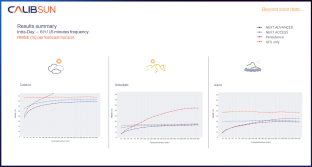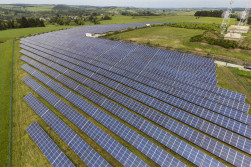Industries: what are the solutions for overcoming energy dependence?
 5 May 2023
5 May 2023
 5 May 2023
5 May 2023
Most of the energy used by industrial plants comes from the energy mix, which includes fossil fuels (gas, coal, etc.), nuclear, hydraulic, solar and wind power. Industrial activity is energy-intensive, uninterrupted and highly dependent on the electricity grid.
The energy market is subject to geopolitical and price fluctuations, and can experience supply difficulties. To increase their energy autonomy while speeding up their energy transition, many manufacturers are turning to the integration of solar energy into their power mix on a self-consumption basis. These decentralized photovoltaic (PV) power plants are a low-carbon, low-cost and sustainable source of energy, with solar panels having a lifetime of over 30 years.
Despite the fact that solar energy is intermittent and variable, a multi-horizon solar resource forecasting service enables the optimal operation of photovoltaic (PV) power plants. The use of a reliable forecasting system is essential for both solar players and manufacturers with PV installations. To be efficient, it must offer a vision on several scales (from local to global) and all time horizons (from hourly to weekly).
Power drop detection
For industries operating on isolated sites, forecasting must be combined with an on-site detection service (nowcasting) to anticipate power drops. In order to engage an alternative source and no longer be dependent on unforeseen climatic variations.
Economic optimization
From an economic point of view, solar forecasts with a high degree of accuracy associated to a service anticipating power drops due to clouds, enable manufacturers and network operators to optimize their operations. CalibSun provides smart tools to plan production and manage storage, while maintaining supply/demand balance at all times. A good level of control and optimization results in substantial savings, by reducing dependence on traditional energy sources and improving the integration of solar energy into the power grid.
Energy independence strategy
From a strategic point of view, solar forecasting and cloud detection offer a competitive advantage to both industry and grid operators. With relevant and accurate solar irradiation and production forecasts, operators can proactively adjust the operation of their PV plant. They can optimize energy storage and guarantee the best possible yield. By relying on solar power, manufacturers and utilities can reduce their dependence on imported fossil fuels, improve their energy security and strengthen their bargaining power.
For isolated sites and microgrids, the installation of a PV power plant with an alternative source and a real-time sky observation detection system means less downtime and more appropriate decisions, resulting in improved overall performance (profitability, fewer supply issues, lower losses, etc.).
What's more, by harnessing this renewable, low-carbon energy, manufacturers and network operators are responding to political commitments to energy transition, attracting investors and promoting a virtuous, innovative commitment.


 en
en 
 fr
fr es
es de
de



